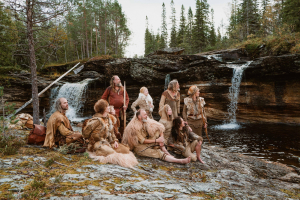
There is a quiet shift happening in how people relate to the natural world. Not through protest or policy, but through gardens, city parks, rivers, and rooftops. The trend is rewilding. Once associated with conservation and large landscapes, the idea has become personal. From overgrown home gardens filled with pollinators to early morning swims in cold rivers and mindful walks through woodlands, rewilding is being embraced as a lifestyle and a form of everyday resistance.
What Is Rewilding in Daily Life?
Rewilding typically refers to the process of restoring ecosystems to their natural state. In a personal context, it means inviting more natural rhythms, messiness, and spontaneity into everyday routines. This might look like growing food, swimming in natural waters, or simply taking off your shoes and walking on grass.
It is about shifting from control to cooperation with the environment, letting go of rigid habits and reconnecting with seasonal cycles and sensory experiences.
Why Is It Happening Now?
Several cultural forces are driving the popularity of rewilding:
-
Digital fatigue: With so much of daily life mediated through screens, there is growing desire for tactile, real-world experiences. People are looking to offset virtual overload with time spent outdoors and offline.
-
Mental health awareness: Research increasingly shows that time in nature reduces anxiety, improves mood, and supports focus. Forest bathing, cold water immersion, and walks in green spaces are now widely embraced for their therapeutic effects.
-
Climate consciousness: The environmental crisis has prompted many to question how disconnected modern life has become from nature. Rewilding offers a personal way to take responsibility and rebuild that lost relationship.
 How Rewilding Looks in Practice
How Rewilding Looks in Practice

-
Gardens are being transformed from neat lawns into wildflower zones and insect habitats.
-
Wild swimming in lakes, rivers, or the sea has become a ritual for physical and mental reset.
-
Forest bathing and nature walks are being used as tools for mindfulness and relaxation, helping people slow down and notice their surroundings.
-
Unplugged weekends and slow living reflect a growing rejection of fast-paced, tech-heavy routines.
Rewilding in the City
Rewilding is not limited to the countryside. In urban settings, it appears in small balcony gardens, overgrown verges, and guerrilla gardening projects. Local governments are beginning to embrace less manicured public spaces and support biodiversity in city planning.
More Than a Trend

This movement is not about escaping modern life, but about rebalancing it. Rewilding invites us to live more fully, with greater awareness, humility, and connection to the world around us.








